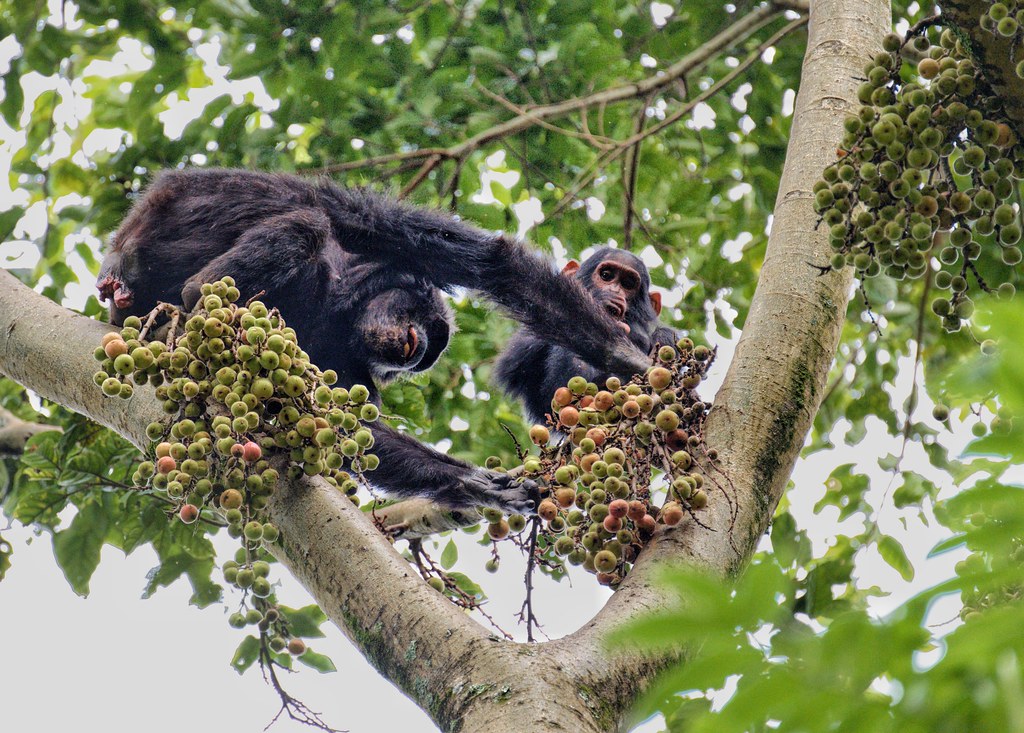Chimpanzee Trekking Information for Rwanda and Uganda
Chimpanzee Trekking Information for Rwanda and Uganda
Chimpanzee trekking in Uganda and Rwanda offers a captivating experience for nature enthusiasts, wildlife photographers, and adventurous travellers. Both countries, renowned for their biodiversity and conservation efforts, provide unique opportunities to observe these intelligent primates in their natural habitats.
Here’s a comprehensive guide to chimpanzee trekking in Uganda and Rwanda, covering essential information, trekking locations, best times to visit, and practical tips for an unforgettable experience.
Uganda: The Pearl of Africa
Key Trekking Locations
Kibale National Park:
Known as the “Primate Capital of the World,” Kibale National Park is home to the highest density of primates in Africa, with over 1,500 chimpanzees. The park offers both chimpanzee trekking and habituation experiences, allowing visitors to spend more time with the chimps.
Budongo Forest Reserve:
Located in Murchison Falls National Park, Budongo Forest is another excellent location for chimpanzee trekking. The forest is rich in biodiversity, providing a lush backdrop for chimp encounters.
Kyambura Gorge:
Often referred to as the “Valley of Apes,” Kyambura Gorge in Queen Elizabeth National Park offers a unique trekking experience. The gorge’s thick vegetation and dramatic landscapes make for an adventurous trek.
Best Time to Visit
The best time to go chimpanzee trekking in Uganda is during the dry seasons from December to February and June to September. During these months, the trails are less muddy, and the chances of seeing chimpanzees are higher as they tend to stay closer to the ground.
Trekking Experience
Chimpanzee trekking in Uganda typically starts early in the morning. Trekkers, accompanied by experienced guides and trackers, follow trails through the dense forest to locate the chimpanzee troops. The treks can last anywhere from one to four hours, depending on the location of the chimps. Once the chimps are located, visitors are allowed to spend an hour observing and photographing them from a safe distance.
Rwanda: The Land of a Thousand Hills
Key Trekking Locations
Nyungwe Forest National Park:
Nyungwe Forest is one of Africa’s oldest rainforests and is renowned for its rich biodiversity. It hosts around 500 chimpanzees, and the Canopy Walkway offers a unique perspective of the forest.
Gishwati-Mukura National Park:
This newly established national park is part of Rwanda’s efforts to restore and conserve its natural habitats. Gishwati Forest is home to a small population of chimpanzees, offering a more off-the-beaten-path experience.
Best Time to Visit
The optimal time for chimpanzee trekking in Rwanda is during the dry seasons, from December to February and June to September. These months provide more favourable trekking conditions and increase the likelihood of chimpanzee sightings.
Trekking Experience
Rwanda’s chimpanzee trekking experience is similar to Uganda’s, with treks starting very early in the morning. The terrain in Nyungwe Forest can be challenging, with steep hills and dense vegetation. However, the park’s diverse flora and fauna, along with the thrill of encountering chimpanzees in the wild, make the trek rewarding. Guides in Rwanda are highly knowledgeable, providing insights into the behavior and ecology of the chimpanzees.
Practical Tips for Chimpanzee Trekking
Permits: Both Uganda and Rwanda require trekking permits. It is advisable to book these well in advance due to limited availability. As of 2024, the price of a chimpanzee trekking permit in both Rwanda and Uganda is $250.
Physical Fitness: Chimpanzee trekking can be physically demanding. Ensure you are in good health and prepared for long walks through rugged terrain.
Clothing and Gear: Wear long-sleeved shirts, long trousers, and sturdy hiking boots. Bring a waterproof jacket, insect repellent, sunscreen, a hat, and a daypack with water and snacks.
Photography: Carry a good camera with a zoom lens to capture the chimps without disturbing them. Be mindful of the park’s guidelines regarding flash photography.
Respect Wildlife: Maintain a safe distance from the chimpanzees and avoid making loud noises. Follow the guide’s instructions to ensure a safe and respectful interaction with the wildlife.
Conclusion
Chimpanzee trekking in Uganda and Rwanda is a remarkable adventure that immerses you in the heart of Africa’s tropical rainforests. Whether you choose the vast primate haven of Kibale or the ancient Nyungwe Forest, the experience of observing chimpanzees in their natural habitat is both exhilarating and humbling. By planning your trip during the optimal seasons and following practical tips, you can ensure a successful and memorable trekking experience.







Comments are closed